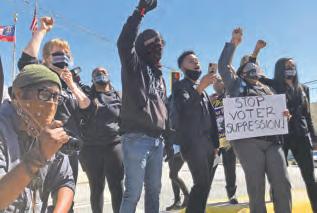




By TABIUS McCOy & DONNELL SUGGS
It has been a week since the federal government shutdown, which took effect a minute past midnight on Oct. 1. Among the several federally funded initiatives impacted was the Centers for Disease Control and Prevention (CDC), which furloughed roughly 8,700 employees as a result. Federal workers for essential services like the Transportation Security Administration (TSA) and the National Park Service are at work, but might not get paid next week if the shutdown continues. The House has been adjourned for the remainder of this week, so it looks like the shutdown will head into its third week.
At the King Center in the Sweet Auburn Historic District, the level of quiet on a Tuesday morning was palpable. Ebenezer Baptist Church, a popular tourist attraction for its Church Talks series and tours of the former church home of the late Dr. Martin Luther King, Jr., was closed due to the government shutdown. The sign behind the glass of the outdoor bulletin read: Closed in large black letters. Under that, “National Parks remain as accessible as possible during the federal government shutdown. However, some services may be limited or unavailable.”
Along with the church, the gift shop inside The King Center was closed. The government shutdown affects more workers outside of the 15% of federal workers who live and work in Washington, D.C. Between The King Center and other national parks, there are thousands of employees who will have their finances affected by this shutdown.
Earlier this week, the busiest airport in the country, Hartsfield-Jackson Atlanta International Airport, the lines outside of the
main checkpoint in the domestic terminal were moving along. TSA agents could be seen checking IDs and scanning boarding passe s. At Hartsfield-Jackson, the number of TSA employees and air traffic controllers affected is in the dozens. How those essential workers approach their daily duties will play a major part in how this shutdown will be remembered.
The shutdown will result in lower-than-normal paychecks on October 15, if they are distributed at all. Furloughed workers will receive back pay when the shutdown is over, but for so many Americans, that might be a paycheck or two too late.
This is the first government shutdown in six years, since the record-long shutdown that took place from 2018 to 2019. Government shutdowns usually happen because of disagreements over funding between the Democratic and Republican parties. The current shutdown had been brewing since early September, and as the fiscal year ended, the two parties could not agree on government spending, particularly related to health care funding.
In simplest terms, Democrats wanted to include Affordable Care Act subsidies and Medicaid protections in the recent stopgap funding. At the same time, Republicans wanted a “clean” funding bill without any changes to health care programs. This disagreement led to the shutdown on the morning of Oct. 1.
When government shutdowns take place, the impact doesn’t just affect high-ranking political officials on Capitol Hill; it affects everyday workers locally, right here in Georgia, where more than 110,000 are federal employees.
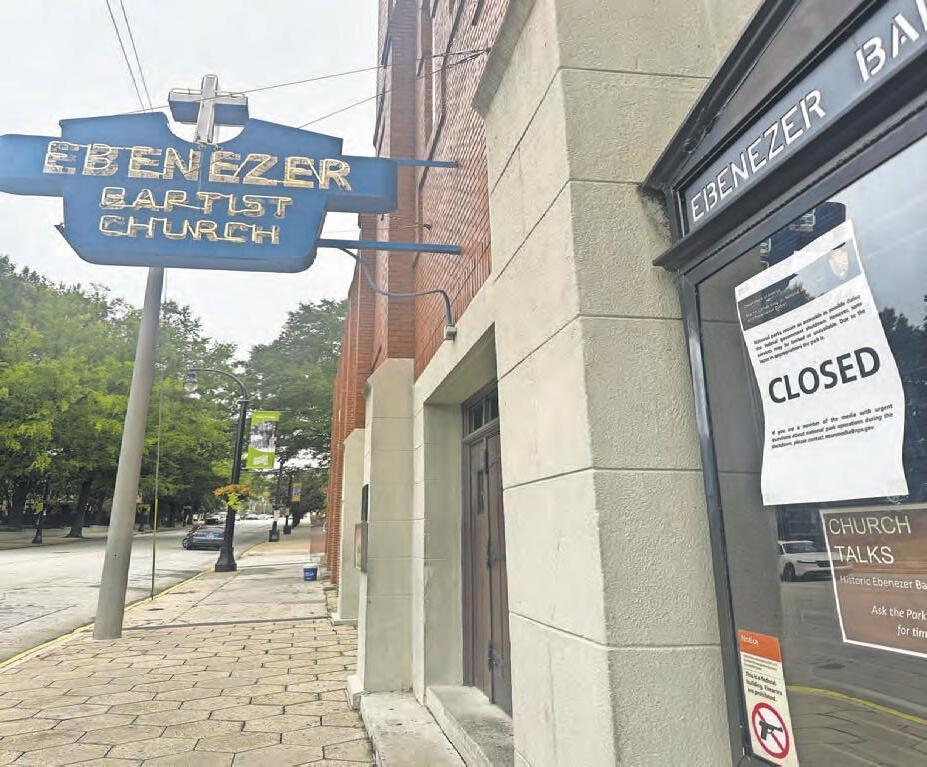
As a result of the current government shutdown, many federal employees are going without pay until an agreement is reached. “Certainly, we all have friends and family who know people who work for the federal government, including the CDC. If they’re furloughing half of the staff, that touches a lot of people in Atlanta,” said Staci Fox, president of the Georgia Budget and Policy Institute. The lack of pay during this indefinite shutdown period disadvantages households that rely on federal paychecks for living necessities.

The shutdown also comes at a time when many federal entities, such as the CDC, FDA, and Department of Education, had already faced layoffs due to reduced federal budgets. The CDC alone laid off more than 600 employees in August 2025, according to data provided by the American Federation of Government Employees (AFGE) to the Associated Press.
In the midst of the shutdown, programs such as WIC and SNAP are at risk. In Georgia, over 190,000 people benefit from WIC, putting families who rely on funding for food and baby formula at substantial risk. Additionally, more than 1 million residents in the state receive some form of federal funding from SNAP. “This is also children and elderly—to the tune of 1.4 million Georgians getting financial support to put food on their tables. This goes beyond someone losing a paycheck because they’ve been furloughed. This is a real economic security issue for families across the country, and certainly right here in Georgia when the government stops doing its job,” Fox said. Although SNAP and WIC have some contingency funds in place, if those funds are exhausted during the shutdown, millions of families could be negatively impacted.
As of Wednesday, Oct. 8, the United States Senate had no scheduled votes. A potential vote could occur on Friday, but no decision has been made yet.
By LAURA NWOGU
Surrounded by local community members and business leaders on the rooftop of Roosevelt Hall, The Atlanta Voice publisher Janis Ware was honored at the City of Atlanta’s Salute to Legacy luncheon on Tuesday afternoon. The event recognized longstanding local businesses that have helped shape the cultural and economic fabric of Atlanta for the past 30 years. Under the helm of Ware and her dedication to innovation and community impact, The Atlanta Voice has stood the test of time in its mission to be a voice for the people, since it was co-founded by her father, J. Lowell Ware, in 1966.
“I’m excited and thrilled to be recognized as a legacy business. It’s not easy to make it 30 years, and it’s even more of an accomplishment to get to 60,” Ware said.
The event was the brainchild of Invest Atlanta, the city’s economic development authority. Atlanta Mayor Andre Dickens, who also serves as chair of the Invest Atlanta board, attended the luncheon and recognized the adaptability and resilience of many of Atlanta’s small business owners. Dickens emphasized the importance of celebrating these legacy businesses that have contributed to Atlanta becoming the “city that influences everything.”
“Legacy businesses are pillars and economic anchors for the community, and we can’t be a city of opportunity for all if we don’t uplift our legacy businesses. You all provide consistent jobs for our residents…. These businesses

have mentored generations of entrepreneurs and reinvested in our local economy, whether it is boom or bust, recession or pandemic, or any other thing — 30 years you have endured,” Dickens said.
“Your longevity brings economic stability to our neighborhoods, and this is especially important in times of uncertainty. Your businesses represent the living history of Atlanta, each one of you telling a story of your own and a collective, shared journey that we all have. To stay in business for 30 years or more takes resilience, innovation,
and deep connection to the community.”
The Atlanta Local Legacy Program comprises over 400 businesses. Those who are a part of the program are included in an online registry that allows interested customers to find and patronize their establishments, and are qualified to apply for improvement grants aimed at sustaining vital businesses within the community.
Twenty businesses were inaugural recipients of the local legacy program celebration, including The Atlanta Voice, Busy Bee Cafe, Atlanta Human Performance Center, The Beautiful Restaurant, Georgia Justice Project and Mr.
Everything Cafe, to name a few. Each business was awarded the first edition of the Atlanta Legacy Coin, a commemorative gift that Invest Atlanta President Eloisa Klementich said will continue the legacy of telling the stories of important organizations and events in the city.
“Longevity in business is not just about profit. It’s about purpose. It’s about people. It’s about preservation,” Klementich said. “You [legacy businesses] have helped to build and inspire the foundation we all stand on, and we continue to light the way forward. Here’s to the next 30 years.”
By
The next phase of MARTA’s Five Points Transformation project begins Monday, Oct. 13, with the closure of the Peachtree Street station entrance and the federal tunnel for employees.
Beginning Oct. 13, customers must use Forsyth Street to access Five Points Station.
The Forsyth Street entrance will be the only access point for Five Points due to construction. Closing the Peachtree entrance and federal tunnel is a necessary next step for the demolition and safe removal of the existing concrete canopy.
The following service impacts remain in effect at Five Points:
• Alabama Street and Broad Street Plaza entrances remain closed.
• Restrooms remain closed.
• Customer service offices have temporarily relocated and will eventually relocate to Ashby Station. The opening date will be
announced once available.
• All buses continue boarding on Forsyth Street.
• Rail service and transfers are unchanged.
• Elevators remain open for access and transfers.
While elevators remain open, there will be temporary escalator and stair closures over the next few weeks leading up to the Peachtree Street closure.
During this time, crews will put up scaffolding and overhead protection to prepare for the removal of the concrete canopy overhead. Signage will be installed to guide customers.
MARTA is transforming Five Points Station into a vibrant city center with improved transit connectivity, increased safety, and enhanced customer amenities. This first phase of the project includes the deconstruction and removal of the concrete canopy. Future phases include building a new canopy, improving the centralized bus hub and pedestrian connection to Broad Street, and incorporating
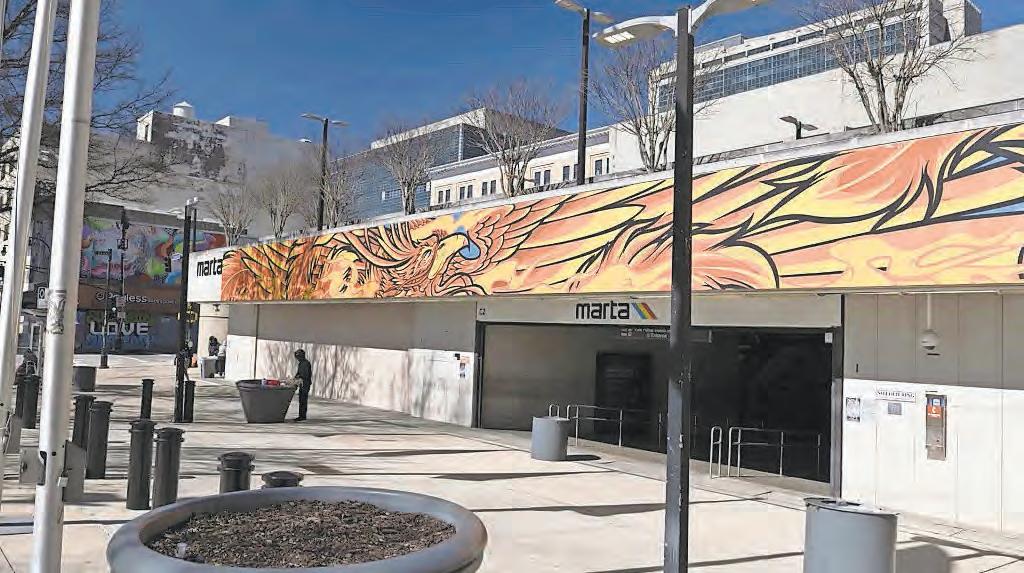
MARTA core penny.
By ASWAD WALKER
Every generation of Black youth has been doubted, dismissed and underestimated.
They’ve been told they’re not ready, not serious, and too distracted by the new technologies of their day. Yet, time and again, Black young adults have been the fire that ignited movements, the ink that wrote the future and the voices that refused to be silenced.
Today, Gen Z is stepping into that legacy. The real question is not whether they are ready to lead— but whether we are ready to follow.
We’ve heard the criticisms: Gen Z is lazy, entitled, glued to their phones. But this narrative ignores their creativity, their hustle and their fierce determination to reshape the world they inherited. What we’re witnessing is not complacency—it’s courage.
Like those who came before them, Gen Z is daring to dream bigger, organize smarter and demand justice louder.
Youth-Led Movement Legacy
History teaches us that movements are youth-powered.
In the Harlem Renaissance of the 1920s and 30s, young visionaries like Langston Hughes and Zora Neale Hurston helped reimagine Black identity through art, literature and music. In the 1940s, young activists like Pauli Murray and Bayard Rustin laid the groundwork for the Civil Rights Movement, which would explode in the decades that followed.
When the 1950s and 1960s brought calls for desegregation and freedom, college students—Diane Nash, John Lewis, and Stokely Carmichael—sat at lunch counters, rode Freedom Rides and built SNCC (Student Nonviolent Coordinating Committee) into a force that shook America’s conscience. Their organizing brilliance and willingness to risk everything didn’t just complement the work of established leaders; they drove the movement forward.
In the late 1960s and 70s, the Black Power Movement gained steam, and young people like Angela Davis, Huey Newton and Assata Shakur dared to push conversations on liberation,
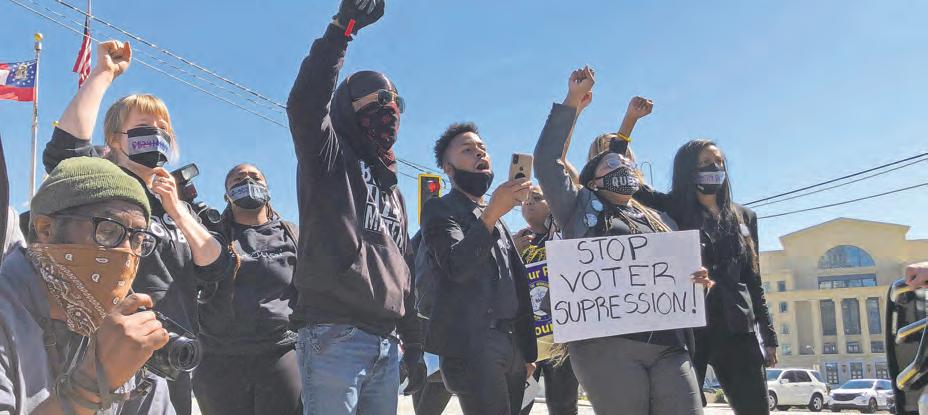
self-determination and Pan-African solidarity even further. In South Africa, a college student named Steve Biko was one of the most passionate and respected leaders of the anti-apartheid movement.
And in the 1980s, young Black thinkers and student activists, including leaders from the University of Texas at Austin, nurtured a Black Consciousness movement that reawakened racial pride, challenged institutional racism and connected with the global fight against apartheid in South Africa.
More recently, in the 2010s, young people like Alicia Garza, Patrisse Cullors and Opal Tometi who birthed Black Lives Matter, a decentralized, unapologetic call to value Black lives and demand systemic change. What connects all these eras is clear: Black youth have always been at the forefront of transformation.
Gen Z Takes the Baton Now comes Gen Z. Born between the mid-1990s and early 2010s, they are digital natives, but their activism is anything but virtual. They are leveraging TikTok, Instagram, and Twitter not just to share memes but also to mobilize protests, expose injustice and create global solidarity.
Look at young leaders like Nia White, a Houston activist organizing around climate justice; Naomi Wadler, who at just 11 years old spoke powerfully about gun violence against Black girls at the March for Our Lives rally; or Zyahna Bryant, a Charlottesville activist who, as a teenager, petitioned to remove
Confederate statues years before it became a national flashpoint.
Internationally, Gen Z voices like Vanessa Nakate, a Ugandan climate activist, are making sure Africa is not erased from the global climate conversation. In the arts, Marsai Martin, an actor and producer, is reshaping Hollywood narratives and proving Black girls can lead on- and off-screen. And in Houston, Gen Z creatives and organizers are fighting on the frontlines for affordable housing, police accountability and educational equity.
Gen Z is not waiting for permission to lead—they’re already doing it.
But here’s where we, the older generations, must check ourselves. Too often, elders have blocked the very leadership they once embodied in their youth. Some of us still believe leadership looks like it did in the past— marches, speeches, suits and pulpits. But leadership evolves. Today, leadership might look like a viral campaign that shifts millions of minds in 24 hours. It might look like community mutual aid networks, grassroots entrepreneurship or digital organizing.
This is why we need more Ella Bakers among us. Baker believed deeply in the power of young people. She advised, nurtured and equipped them—and then she stepped aside. She knew movements succeed when elders share wisdom but don’t hoard power. Are we willing to do the same?
Despite the weight of inherited struggles—racism, climate crisis, economic inequality—Gen Z continues to move with resilience and vision. They promise a more inclusive, equitable world. But for that promise to become reality, we must choose to see them not as competitors or “kids who don’t know anything” but as partners in liberation. When Langston Hughes dreamed, he dreamed as a young man. When Diane Nash strategized, she strategized as a college student. When Alicia Garza tweeted #BlackLivesMatter, she was in her 30s but surrounded by youth willing to put their bodies on the line. The torch has always been carried by the young.
So, how do we support Gen Z leaders in their fight for justice?
• Listen actively. Take their ideas seriously, even when they sound unconventional.
• Mentor wisely. Share experience, but don’t demand control. Offer guidance, not chains.
• Resource generously. Support their projects with time, money and connections.
• Protect fiercely. Stand with them when institutions push back or attempt to silence them.
• Celebrate openly. Lift up their victories in our homes, churches and community spaces. The future is not waiting—it’s already here. Gen Z is ready to lead. The question is: are we ready, finally, to follow?
FOUNDED May 11, 1966
FOUNDER/EDITOR
Ed Clayton Immortalis Memoria
PUBLISHER/EDITOR
J. Lowell Ware Immortalis Memoria
The Atlanta Voice honors the life of J. Lowell Ware.
PUBLISHER Janis Ware
PRESIDENT/ GENERAL MANAGER
James A. Washington 2018-2024
EXECUTIVE ASSISTANT TO PUBLISHER
Chia Suggs csuggs@theatlantavoice.com
EDITOR IN CHIEF Donnell Suggs editor@theatlantavoice.com
GENERAL ASSIGNMENT REPORTERS
Isaiah Singleton isingleton@theatlantavoice.com
Laura Nwogu lnwogu@theatlantavoice.com
Noah Washington nwashington@theatlantavoice.com
BUSINESS REPORTER
Tabius McCoy tmccoy@theatlantavoice.com
EDITOR AT LARGE Stan Washington swashington@theatlantavoice.com
ADVERTISING, SALES & CIRCULATION
ADVERTISING ADMINISTRATOR
Chia Suggs advertising@theatlantavoice.com
SALES
RDW Jackson rdwadman@gmail.com
SUBMISSIONS editor@theatlantavoice.com
DIRECTOR OF PUBLIC RELATIONS
Martel Sharpe msharpe@theatlantavoice.com
CONTACT INFORMATION
633 Pryor Street, S.W. Atlanta, GA 30312 Office: 404-524-6426 info@theatlantavoice.com


By LAURA NWOGU
Atlanta is far from lacking when it comes to Southern food. From family-style offerings where the tables are weighed down by all the classics, reliable take-out spots that have been fixtures for years, to the hole-in-the-wall diner spots that you only know about if Atlanta has been your home since birth. Marcus Bar and Grille is a relatively new kid on the block, having only opened in March 2023. But in those two plus years, award-winning chef and restaurateur Marcus Samuelsson has achieved what many have with more years on their belt: a vibrant and community-driven spot focused on elevating the classics we know and love.
The Atlanta Voice reporter Laura Nwogu visited Marcus Bar and Grille a week after its debut at the Atlanta Food & Wine Festival. It was her second time at the restaurant, the first visit having only been a small taster of the happy hour menu. On a Wednesday evening, tables were packed, and people flowed in and out of the Old Fourth Ward to eat at the restaurant, where every corner was focused on Atlanta culture and food.
The Wednesday special included the Golden Bird Tower featuring fried chicken and waffles, deviled eggs topped with caviar, and cornbread. The Dey Know Punch Bowl was the drink special, a bowl of housemade rum punch that looked like summer in a drink and could easily serve 3-4 people.
However, The Atlanta Voice wanted a fuller taste of the menu. We ordered deviled
eggs, roller skate ribs, the B&G seasonal salad, crispy whole wings, miso-glazed salmon, crab mac and cheese, and truffle fries.
When you hear Southern food, dishes like fried chicken, ribs, and deviled eggs usually come to mind. The roller skate ribs were tender and drenched in a peach barbecue sauce that gave a welcome sweet flavor to the dish, and the crispy whole wings were the right amount of crunchy and spiced, only made better by the combo of the ranch dressing and hot sauce. One of the highlights of the dinner was the B&G seasonal salad. Elevating a salad from OK to great takes the right combination of ingredients, and the smoked tomato, whipped cheese, spiced pecans, and truffle mustard vin did just that. It only excited us more for the main dish, which was the miso-glazed salmon, a dream-worthy creation paired with crab fried rice, green pea puree, and red curry. For a Southern spot, it’s surprising that an Asian-inspired salmon was the star of the show, ready to go toe-to-toe with other salmon dishes in the city.
Mac and cheese is a hotly debated and critiqued part of Southern food, but the crab mac and cheese passed our test and was a warm delight. We ended the night with truffle fries, a perfect balance of truffle that didn’t overpower what we love about French fries — a golden, crispy, and addictive side dish.
Marcus Bar and Grille is more than worth a try.
The restaurant is located at 525 Edgewood Ave SE and is open Tuesday-Sunday.



By DONNELL SUGGS
Major League Baseball’s postseason has begun, and for the teams and fan bases involved, there will be a chance to win a World Series title. One of those teams involved was the Cincinnati Reds; decades ago, in the 1970s, that franchise was one of the perennial favorites to win championships.
That team, nicknamed The Big Red Machine for its efficiency and power, had fans all over the country. One of those fans was sports writer and author Terence Moore. During Moore’s youth and later as a young reporter for the Cincinnati Enquirer, he had the unique opportunity to get close to the stars of The Big Red Machine, Joe Morgan, Johnny Bench, Ken Griffey, Sr., Tony Perez, and, of course, Pete Rose.
Moore visited The Atlanta Voice to discuss his inspiration for his latest book, “My Big Red Machine,” walking the thin line between fandom and journalism, and his lifelong love for baseball.
The Atlanta Voice: Good morning, Terence. Is this your first time inside The Atlanta Voice office?
Terence Moore: Yeah, I can feel the history as we sit here right now. You can feel the history of the people that this paper represented through the years and decades. Black publications were so huge to the Civil Rights Movement in general, but particularly here in Atlanta.
AV: How long have you been thinking about writing this book? I know you grew up in Cincinnati and had worked at one of the local daily newspapers. This book must have been special to report on.
TM: It’s been forever. I would tell people different stories, and they would say that I needed to write about it. The Big Red Machine is the greatest team in baseball; that’s my story, and I’m sticking to it. The Reds of the 1970s won more games than anybody in baseball in that decade. And in 1975 and 1976, they won back-to-back world championships. This is the 50th anniversary of the first of those back-to-back championships. I figured the timing is perfect.
AV: But this book is about more than baseball, correct?
TM: The thing that I am very proud of about this book is that people are shocked that it’s not just a baseball book. It’s not just about The Big Red Machine; it’s not just about sports. It’s sort of a memoir about me as a young person idolizing this team, and also having another goal in life: becoming a journalist. It’s an interesting journey.
AV: If you had to describe this book in a
sentence, what would that sentence be?
TM: It’s a riveting tale with great storytelling. The storytelling gives the reader the journey of not only my life, but the life of anybody who was passionate about anything in his or her life. And then having it come to fruition.
AV: How did it feel to be telling parts of your life, family, and career in this book? You have done this in your previous books, like in The Real Hank Aaron, but this went deeper.
TM: It was an out-of-body experience. After I wrote this book, and then I read the proof, I was like, ‘Who wrote this?’ It was the strangest thing. There were passages that I know I obviously remember writing, and then there were other passages that I was like, ‘This was unbelievable.’
Moore revealed that the entire project came together -from start to publication- in 13 months. “Somehow I was able to get this done,” he said.
AV: On page 63 in chapter 3, you vividly describe the smells inside the old Crosley Field on your first visit with your family. The recall of the many personal and professional
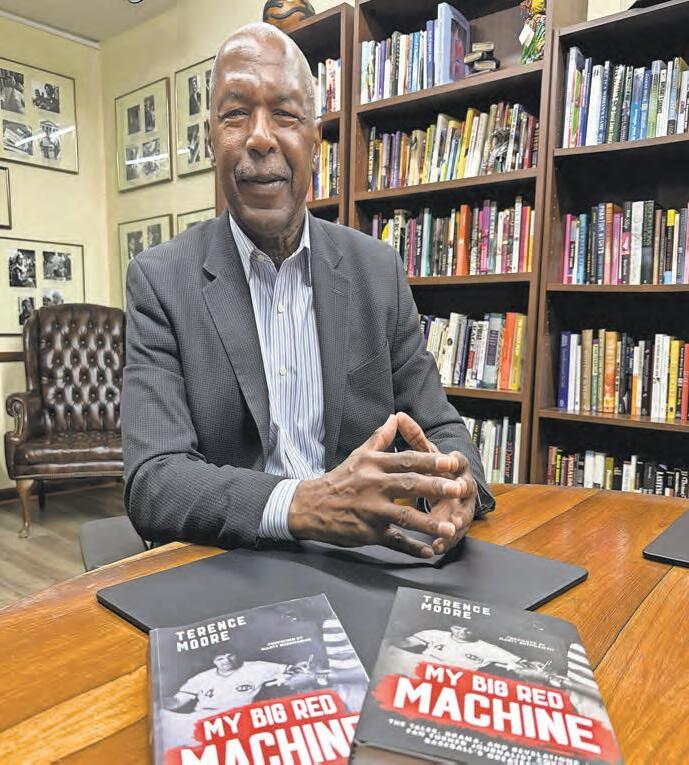
moments was so interesting. How did you remember so much detail?
TM: A lot of people ask me that. Even before I was a reporter, I was a reporter. I’m very much my mother’s son; she never threw

away anything. I save everything. It’s just unbelievable the stuff that I’ve saved through the years.
One of the things I teach my journalism students is the big three: reporting, interviewing, and angles. It’s a must in anything that you do.
AV: In the book, you describe writing the first story ever on Ken Griffey, Jr. in the Cincinnati Enquirer in July 1978. Did you see anything special about the boy that told you he would become a future Baseball Hall of Fame inductee?
TM: I’m at Riverfront Stadium in the summer of 1978, my first year of working at the Cincinnati Enquirer. One of the groundskeepers came up to me and told me I should do a story on Ken Griffey. I told him I had written tons of stories on Ken Griffey, and he said no, not the father, the son. I said ‘How old is he?’ and he said he’s eight years old. I said, ‘Ok.’
Moore said that when he finally decided to look into how good Ken Griffey, Jr. really was, he was astounded that the groundskeeper’s tip was spot on. “He was the greatest eight-yearold kid I ever saw,” Moore said.
AV: What do you want readers to come away with from reading “My Big Red Machine”?
TM: I want them to understand that you can bring stories alive through a lot of circumstances, situations, and experiences. That’s what I try to do. I try to bring stories alive by using myself as a vehicle to show different aspects of life. Because we can all relate to journeys, we can all relate to the journey of being a young person and having a fixation and passion for something. For me, it just happened to be this baseball team, this Big Red Machine. The greatest baseball team of all time.
By NOAH WASHINGTON
Move over, Milan, step aside, Paris, Atlanta is striking a pose of its own.
Atlanta Fashion
Week (ATLFW) 2025 stitched together four days of style, sound, and Southern swagger.
Held this year at Atlantic Station, Atlanta Fashion Week transformed the city into a living runway filled with shows, pop-ups, and brand activations. The event celebrated the designers and dreamers shaping Atlanta’s ascent as a global fashion capital.
Building From the Ground Up
Among those taking center stage was Chance Sanderlin, a 20-yearold junior at Clark Atlanta University majoring in Business Administration. Selected to design pieces for Adidas’s ATLFW capsule, Sanderlin brought youthful energy and streetwear sensibility to one of the week’s most anticipated collaborations.
“I’m just grateful to be here,” Sanderlin said. “Being able to put my own input into the clothes and bring my ideas into the Adidas space was huge.”
Sanderlin designed three full outfits, seven pieces total, and said the process was one of persistence. “We had to keep revamping things. It was trial and error, but everything came out good in the end.”
Having started his brand


Overrated Cultuur at just 12 years old, Sanderlin said Atlanta’s diverse style scene continues to inspire him. “Everybody in Atlanta has their own way of being,” he said. “You get to take bits and parts of what you like and make it your own.”
Watching his designs hit the runway, Sanderlin described the moment simply, “I felt grateful that something I created is out there being worn.”
A Platform for the City’s
That sense of gratitude echoed across the vendor space, where Atlanta-based designers showcased their work to new audiences.
Robert Ware, founder and creative director of Faith+Figures, said ATLFW gave his streetwear brand a chance to reach beyond its usual markets. “We do a lot of streetwear events, but nothing like Fashion Week,” Ware said. “Atlanta culture is second to none. It’s about Black brands, Black support, just support in general. That’s what makes being here special.”
For Nashon Lee, bringing his menswear line Nohsan at ATLFW was a breakthrough moment. “I’ve participated in New York Fashion Week and L.A. Fashion Week, but Atlanta takes the cake,” he said. “We have an amalgamation of cultures and flavors. People here actually participate and enjoy the company of up-and-coming brands and artists.”
Redefining the Atlanta Lens
Designer Jai Lyle had his inaugural ATLFW runway premiere this year during the GOAT x Jai Lyle show, describing the experience as both
validation and vision. “I feel great,” he said. “It’s like playing a game, you’re so locked in you don’t realize what’s happening around you.”
Lyle said his mission is to merge Atlanta’s fabric and heritage with global appeal. “We want to elevate the taste level of who the world thinks Atlanta is,” he said. “We’re here to redefine it and add value to the blueprint that Atlanta has already laid down.”
Evolution of a Movement
Even attendees had the opportunity to step into a designer’s role. Rae Holliday, who has attended fashion weeks from New York to Paris, said Atlanta’s take on fashion feels distinctively hands-on.
At the Adidas Originals pop-up, one of ATLFW’s interactive highlights, guests were invited to design their own custom T-shirts, “I’m accustomed to just attending shows and purchasing,” Holliday said while pressing his design featuring the ATL logo. “But this is actually my first time being invited to create my own custom piece.”
Reflecting on the city’s creative spirit, he added, “I think Atlanta has its own style. New York concentrates on other brands bringing it there, while Atlanta actually spotlights its own fashion.”
“I’ve probably been to at least ten Atlanta Fashion Weeks,” said Carlea Woods, culture and style editor for Impact and Elevate magazines. “It has evolved tremendously, from partnerships to locations. Angela keeps finding new ways to


put Atlanta on the map and support local designers.”
Produced by RAGTRADE ATLANTA, the 2025 edition of Atlanta Fashion Week featured major partners and sponsors including Adidas, BMW, Bloomingdale’s, Clinique, and IKEA, amplifying the city’s creative momentum.
“This year proved that Atlanta has the energy, the brands, everything it needs,” said Angela Watts, founder of RAGTRADE ATLANTA. “I’m already starting on 2026.”
By DONNELL SUGGS
The Atlanta Hawks began the presea son away from home. The preseason opener took place in Houston on Monday night.
On Sunday, Oct. 5, the Hawks prac ticed at the team facility in Brookhaven, putting in some work before heading to Houston.
Newcomers Nickeil Alexander-Walker, Luke Kennard, and Kristaps Porzingis will play signif icant roles on this year’s team. On Sunday, Por zingis could be seen knocking down three-point ers during a drill. On the other side of the practice court, Kennard engaged in a three-point shootout with teammates like Vit Krejci, one of the team’s better long-range shooters last season.
Asked if they are looking forward to taking those three-pointers into an actual game, Lennard said, “Definitely looking forward to it.”
“We have been pushing each other hard this last week of training camp. You’re going up against the same guys every day, so we’re excited to be all to gether as one team and compete as a group,” Ken nard said.
Krejci, who has been with the franchise since the 2022-23 season, said it has been a “long offseason” and he was ready to start playing in games again.
“I’m super-excited to compete with the new guys, and it’s going to be great. We have a lot of good people around here, and we’re just trying to put it all together,” Krejci said.
Monday night was the start of a new season for Atlanta.
“I’m sure it’s going to take a couple of games, a couple of practices, but you can see from the start till now that we are getting better and understand each other more as teammates,” said Krejci.

Last year’s runner-up for NBA Rookie of the Year, Zaccharie Risacher, returns to the court with added confidence and more experience. His role as one of the team’s scoring options will change with the return of Jalen Johnson from injury. And then there’s All-Star guard and the team’s leading scorer and assist man, Trae Young.
With one year remaining on his current contract and a player option for $48.9 million for the 2026-27 season, Young will be playing for more than a division title and playoff spot this year. He wasn’t available to talk to the media after practice on Sunday. Young was all smiles while hoisting three-pointers with his teammates when the media was allowed onto the practice floor.
Hawks head coach Quin Snyder said there were certain things any team wanted to accomplish during the preseason and that these next four games were “an opportunity to put different lineups on the floor.”
The preseason schedule, following the game in Houston, will include a game in Memphis against the Grizzlies on Saturday, Oct. 11, and a pair of home games against the Miami Heat (Monday, Oct. 13) and the Rockets (Thursday, Oct. 22).
The Hawks’ regular season begins at home at State Farm Arena against the Toronto Raptors on Wednesday, Oct. 22. Atlanta finished the 2024-25 season with a record of 40-42. It was the eighth consecutive season the Hawks finished with 43 or less wins in an individual season.

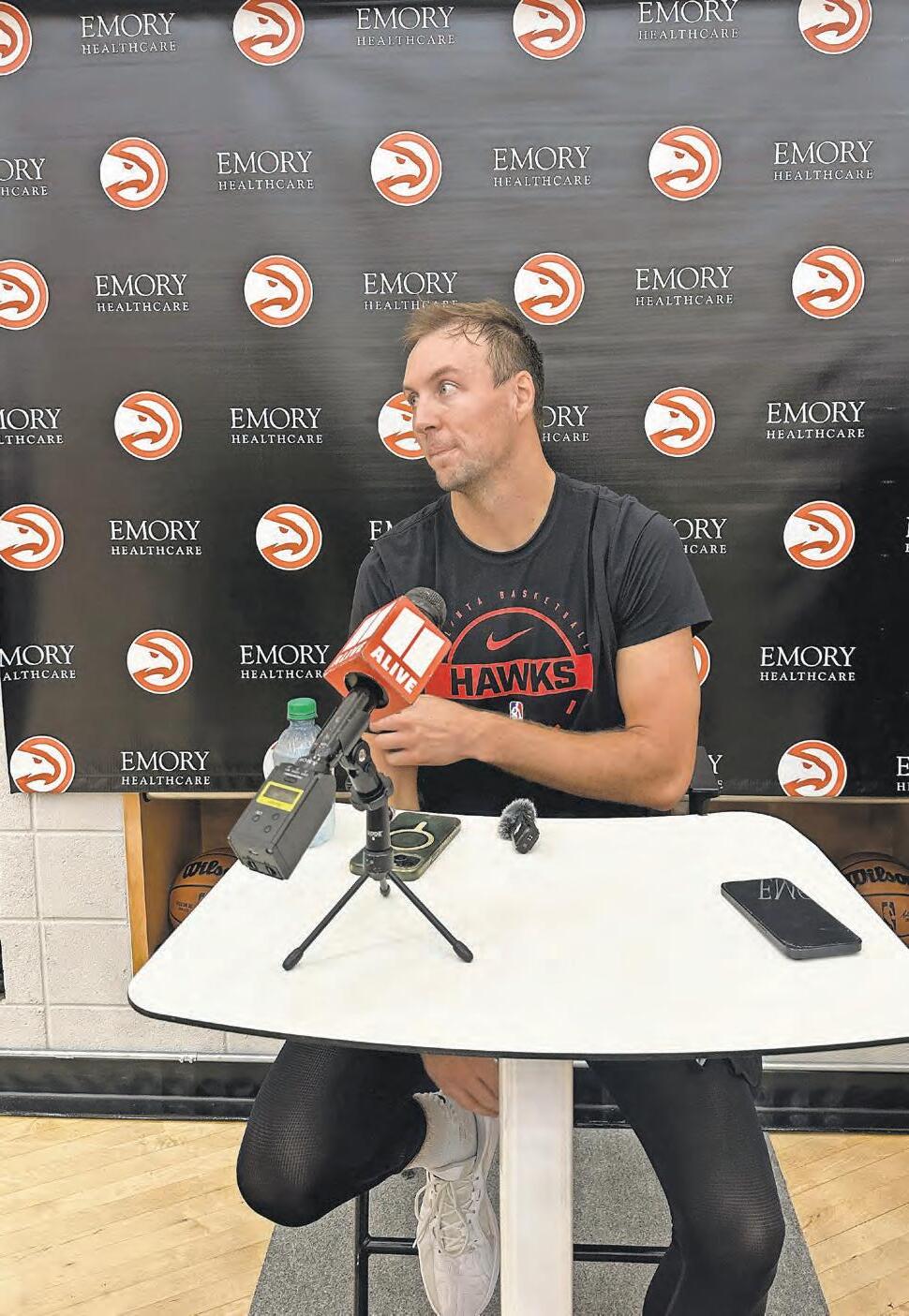
By LAURA NWOGU
On Location is the official hospitality provider for the FIFA World Cup 2026, and the luxury hospitality brand visited Atlanta on Saturday for a sneak peek of what fans can expect when the biggest sporting event in the world makes its way to the city next summer.
What is usually just a normal pick-up soccer match for the Rush Union Youth League turned into an immersive experience with a sideline match viewing area, light bites, drinks and an appearance from Grammy Award-winning artist Ciara.
It’s just a small preview of what On Location plans to offer during Atlanta’s eight matches, including a semifinal match. Their goal is to provide an elevated experience outside of just buying a general ticket.
Jennifer Ogden-Reese, the chief marketing officer for On Location, said they’re focused on infusing the local community into the experience.


“It’s going to be local entertainment, local food and beverages. We’re really trying to integrate every one of the host cities into the hospitality experience and make it very special,” Ogden-Reese said. “And then we have all kinds of different offerings for folks depending on what they want to experience.”
On Location will offer seven hospitality offerings including private suites, pitch side lounge, VIP, trophy lounge, champions club, the FIFA pavilion and the platinum access program. Fans will be able to buy hospitality
package bundles that include those looking to attend single game matches, every match at a venue such as the Mercedes-Benz Stadium, or every match for a specific team. Each offering features different amenities, with prices ranging from $1,400 to over $3,000.
“It’s really about bringing people closer, giving them more access, more convenience, and more of an engaging experience
they would get from just a ticket only,” Ogden-Reese said. “I think it’s really going to be both the kind of traditional hospitality elements, but also really those extra special moments where you have unique experiences that you’re not going to be able to get anywhere else, like being on the pitch and being able to engage with some special legends in the sport.”
By DENNIS MALCOLM ByRON AKA ALE SHARPTON
The midsize crossover market is crowded, but the three-row 2025 Mitsubishi Outlander SEL 2.5 S-AWC still finds a way to shine and stand out. This automaker does a masterful job of combining captive design, interior comfort, and practical versatility while maintaining a fair price starting at around $39K and $45K fully equipped with multiple options to make the most frugal smile.
Refined for 2025, my Outlander was dressed in a stealthy Moonstone Gray Metallic with a contrasting black roof to deliver an upscale presence upon sight. The 20-inch, two-tone alloy wheels; silver roof rails; spoiler; and futuristic LED lighting from nose to tail—including headlights, fog lights, and distinctive combination tail lamps—further raise its curb appeal.
Under the hood, a 2.5-liter DOHC 4-cylinder engine provides adequate pep with direct injection paired to an eight-speed continuously variable transmission (CVT) for a smoother ride. Mitsubishi’s Super All-Wheel Control (S-AWC) system, and multiple drive mode selector—Tarmac, Gravel, Snow, Normal, Eco, and Mud—boosts the confidence to handle whatever road conditions Mother Nature presents the drive. I also appreciated the paddle shifters, and the shift-by-wire technology provided an escape from the

normalcy of traditional gear shifters. The respectable 26 mpg combined (24 city/30 highway) provides some wallet relief with lesser trips to the gas station as well.
Inside, the SEL’s cabin feels more premium than its price suggests including all the extra packages. Semi-aniline leather-appointed seating with brick brown accents, ventilated front seats, and a heated leather-wrapped steering wheel provide generous comfort for especially long-distance excursions. More pilot perks include a 12-way power seat with memory linked to the key fob, an updated 12.3-inch full digital driver
display, 10.8-inch Head-Up Display, digital rearview mirror, and a 12-speaker Dynamic Sound Yamaha Ultimate sound system to elevate the driving experience. Wireless Apple CarPlay and Android Auto; navigation; and multiple USB-C ports keep every passenger powered up. Three-zone automatic climate control, panoramic sunroof, rear door sunshades, and even LED foot lighting collectively make the cabin even more pampering for up to seven people.
Safety is evidently a priority for Mitsubishi as well. Numerous features ease the mind including MI-PILOT Assist featuring
Navi-link; adaptive cruise control with stop & go; lane keep and lane departure prevention; forward collision mitigation with pedestrian detection; blind spot warning with lane change assist, rear cross traffic alert; and rear automatic emergency braking. Multiple airbags—including front center and driver/passenger knee airbags—plus electronic stability control, hill start assist, and trailer stability assist make adventures especially to mountainous environs a welcomed option. Ownership benefits sweeten the deal, including a 10-year/100,000-mile powertrain warranty, five years of unlimited-mile roadside assistance, and two years of complimentary maintenance. I’m not mad at that reassurance.
Overall, the Mitsubishi Outlander SEL 2.5 S-AWC delivers with its 2025 upgrades in numerous departments, including design and technology. So whether it’s bobbing and weaving through the city or feeling adventurous for a long excursion, this SUV steps up to the plate.
Fuel Economy: 24 city/30 highway/ 26 combined
Price: Starts at $38,795 (MSRP); reviewed in the SEL trim and including $3,050 Premium Package; $1,400 Launch Package, and destination is $45,930.
For more information, visit Mitsubishicars.com.
By ISAIAH SINGLETON
It has been over seven years since Jussie Smollett released a full-length musical project, and he’s officially back, embracing a new era of love and freedom with Break Out.
Break Out marks a new era for Smollett as he returns to his musical roots with an album that blends soul, R&B, and raw storytelling.
The project is a joint release from Music of Sound, Smollett’s independent label, and Rowdy Records, founded by Dallas Austin.
“This album is incredibly special to me. So much love was put into it, and I hope folks feel that. This music is about freedom. It’s a timeless album filled with love. I think we can all use a lot of that right now,” Smollett said. “Working with Dallas and Rowdy Records has been an incredible creative partnership. Grateful to share this journey with them. We’re ready.”
“Jussie embodies classic R&B. His voice is effortlessly smooth and uniquely expressive, bringing a rich, old-school soul to this fresh new project. It’s been an incredible experience to be part of his journey,” Austin said.
In addition to the album, Smollett can currently be seen on Fox’s Special Forces: World’s Toughest Test and continues to showcase his acting work with films streaming on Amazon Prime Video (The Lost Holliday) and BET+ | Tubi (B-Boy Blues).
The Atlanta Voice sat down with Smollett in the Warehouse Studios to talk about his upcoming fulllength LP, love, and more.
The Atlanta Voice: The last time you were here at the Atlanta Voice, you released your film, The Lost Holliday. Now you are back and about to release an album called Breakout. Sept. 30. It has been a long while since your last fulllength project, 2018’s ‘Sum of My Music’. How did we get here?
Jussie Smollett: Life. We have lived about eight lives in the last decade, so certainly I’m in a place where my universe around me is in a place where I’m not fully there, but searching for peace and searching for harmony and joy and whatever that looks like to any one of us, knowing that we all deserve that. I’m going through changes, and as you get older, it gets exciting in so

many aspects because you get to feel like you’re taking your power back, and it’s a good place to be.
AV: Break Out marks your first project since 2018, what has been your creative process been like just going into the studio?
JS: I find such peace in the studio. It really is a sanctuary for me, and I don’t know if every studio is that way, but I know the studio in which I work in LA with my music partner, David Michael Ott, is such a place of safety, and it’s tucked away. Nobody knows where we are, and it’s peaceful sitting in there. He’s one of my best friends. I’m the godfather to his son. We’ve been friends for 15 years, and we’ve produced and written songs that ended up on Empire season one through season four, and he’s just a great guy. With this project, we wanted to lean into the musicality of it all into the original place that we were in, which about 95% of this album is live instruments and the musicians we have are legendary. We wanted to create a timeless album.
JS: I didn’t know what timeless looked like at first when we started
recording, but we didn’t start recording a project, I was just recording and it molded, and we kept on moving. I knew from the start, I wanted 10 solid tracks on the album, and we’ve been putting a little bit out in the last two years just to see what people are feeling and what they are liking and not feeling. It was to see what they wanted from me and what I mostly wanted from myself. This album is kind of the realization of the fact life moves on.
AV: You recently signed with Dallas Austin and his record label, Rowdy Records. How was that process?
JS: Dallas has been a friend and a musical brother of mine for a couple of years now, and has been incredibly supportive, even when we were not working together. He would call and check in with no ulterior motives. He really helped and was one of the people that walked me back to performing and music, with the idea that he didn’t rush me and understood it was a process, and he’s worked with so many of our most
legendary artists. It has been incredible, incredible musical partnership so far.
AV: Last time you were here, you made it an emphasis to focus on a new chapter in your life and a new era and hearing this album, you can hear the different space you’re in. You got engaged in June. This project embodies love. Some of my favorite tracks include ‘SomethingsThatISimplyCannotDo’ and the title track, ‘Breakout’. What does breakout mean to you?
JS: That term means freedom in so many ways. Freedom from perception, freedom from misconceptions, freedom to even in the moments that we go through in our lives or in our world, in our country and our families, whatever it may be, that knock us down and make us feel like either we’re never going to feel the same or we’re never going to be understood. That may be just moving past that realizing looking around and seeing how blessed we are. Break Out, to me, is breaking out of old habits and ideas of what you must be to
be palatable for everyone else. It doesn’t necessarily come with age but with growth.
AV: In a time where people make music for hits for TikTok, hearing the album, you can tell you love your craft. Why was it important for you to tell your story through Break Out?
JS: I think music has always been the thing for me. I’ve been saying this a lot on this promo tour, It’s nice to as an actor, to get to hide behind the characters that you play every once in a while, and try out different things. You can always blame it on the character, but you find elements of yourself within that character. However, with music, there’s no hiding; it’s just you. Even the songs that I did not write lyrics for this album, I think three on the album that I did not physically write, they still touch you in a way that’s very personal.
JS: I grew up loving the autobiographical writers like Stevie Wonder, Aretha Franklin, and Janet Jackson. These are my journals. Break Out is available on all major streaming platforms.





accepted by the Fulton County Department of Purchasing & Contract Compliance online through the Web Grants System via BidNet Direct at https://www.bidnetdirect.com/georgia/fultoncounty on Wednesday, November 11, 2025 at 11:00 A.M.. All Bids submitted must be received no later than 11:00 a.m. local (Eastern) time on the stated due date, see Zoom Link below. Web Conference Link: https://zoom.us/j/95567558737
Meeting ID: 955 6755 8737
Bid Bond: N/A
Scope of Work: Fulton County, Georgia “County” is seeking bids from qualified bidders to provide Fire Sprinkler Protection System Maintenance Services.
The detailed scope of work and technical specifications is outlined in the Scope of Work, Section 4 of this bid document.
General instructions, specifications and/or plans for this project can be Downloaded Free of charge at https://www.bidnetdirect.com/Georgia/fultoncounty under “Bid Opportunities”.
Fee: N/A
Term of Contract: 1 Year with 2 Renewal Options
Pre-Bid Conference, will be held online electronically via a Zoom Conference on Tuesday, October 21, 2025 at 11:00 A.M., to provide bidder(s) with information regarding this project and to address any questions. Web Conference Link: https://zoom.us/j/98244308206
Meeting ID: 982 4430 8206
If you have any questions regarding this project please contact Gertis Strozier, APA via Phone: (404) 612-7916 or E-mail at gertis.strozier@fultoncountyga.gov.
Fulton County reserves the right to accept or reject any or all bids and to waive technicalities.


